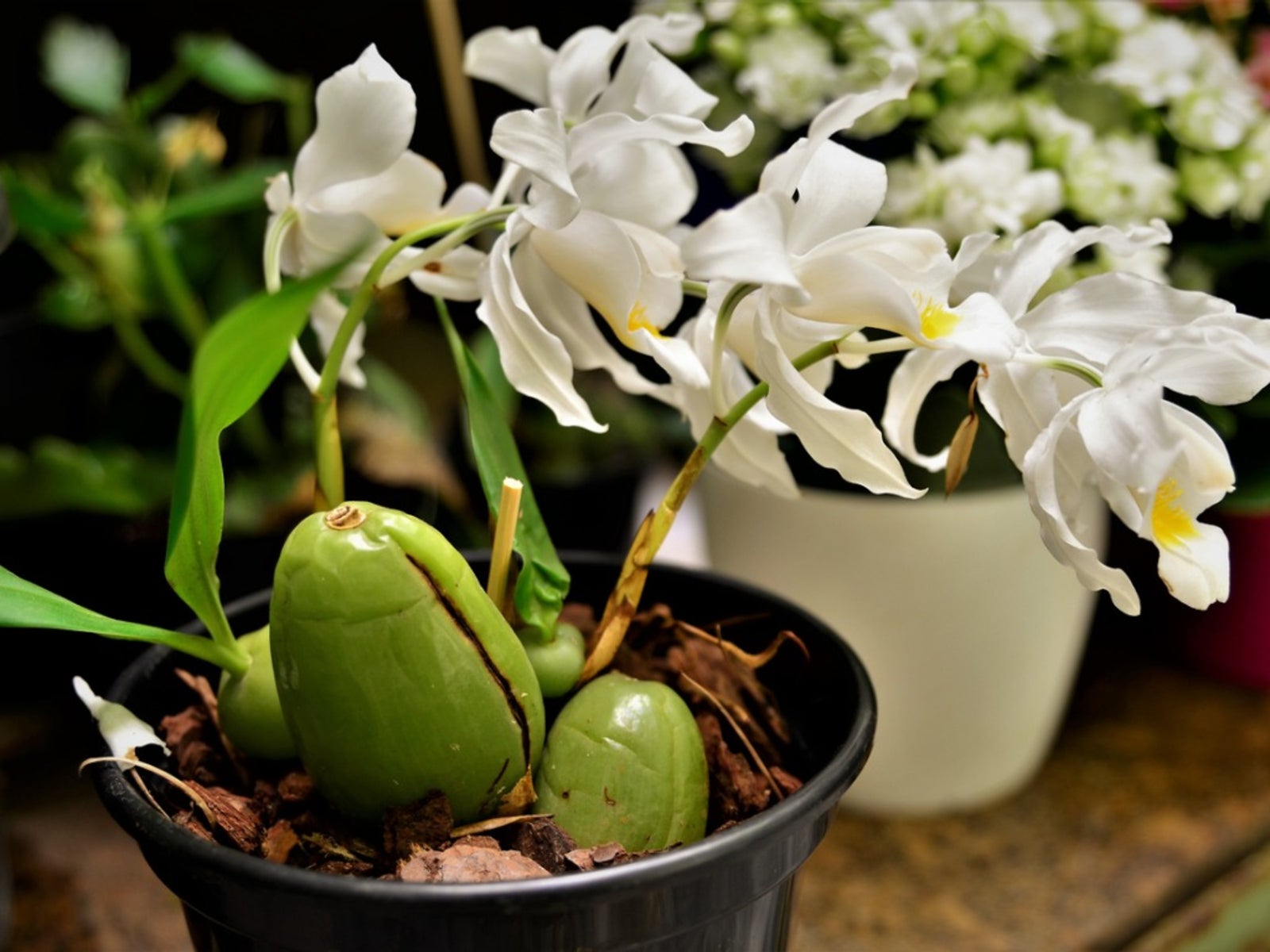What Is A Pseudobulb In Orchids: Learn About The Function Of Pseudobulbs
What is a pseudobulb? Unlike most houseplants, orchids don't grow from seeds or rooted stems. Most common orchids grown in homes come from pseudobulbs. Learn more about them in this article.

What is a pseudobulb? Unlike most houseplants, orchids don't grow from seeds or rooted stems. Most common orchids grown in homes come from pseudobulbs, which are pod-like structures that grow directly below the leaves.
These pods contain water and food just like bulbs underground do, and the function of pseudobulbs is to help keep the plant healthy during spells of bad weather in their natural environment.
Orchids with pseudobulb formation can be propagated relatively easily to increase your orchid collection for free.
Pseudobulb in Orchids
Orchids with pseudobulbs, which are a good number of the most common orchids grown in homes, may include:
Pseudobulb in orchids grow from a horizontal stem that grows underneath the planting medium. These stems travel underground and the pseudobulbs pop up along the length.
Each pseudobulb has the potential to eventually sprout into a new plant, so the potential for successful propagation is very high.
If your orchid leaves fall off their pseudobulbs, leave them in place. It will continue to provide food and moisture to the plant until it's empty, at which point it will shrivel and dry up.
Gardening tips, videos, info and more delivered right to your inbox!
Sign up for the Gardening Know How newsletter today and receive a free copy of our e-book "How to Grow Delicious Tomatoes".
Pseudobulb Propagation
Pseudobulb propagation is most successful if you perform it early in the spring before new bulbs begin to sprout. This is the natural time to repot your plant when it begins to outgrow its home, so do double duty and split one plant into multiples at the same time.
Remove the plant from the planting medium and find the main underground stem. You'll see a number of pods along its length.
Wipe a razor blade with an alcohol pad to kill off any organisms and use it to slice the stem into pieces.
Make sure each piece has two or three pseudobulbs, and that the first bulb in each strand is beginning to bud.
Fill new planters with orchid medium and plant each section of the stem into a new planter.
The buds should begin to exhibit new growth within a month or two, and the clone plants should flower the next year.
-
 Looking For Plants To Give You The Soft And Fuzzies? Try These 5 Fuzzy Leaf Plant Options
Looking For Plants To Give You The Soft And Fuzzies? Try These 5 Fuzzy Leaf Plant OptionsLovers of texture, drama, silver foliage and tactile plants will adore these special sensory garden additions. These fuzzy leaf plant options will leave you all aglow
By Susan Albert
-
 Get Ready For A Summer Of Hummers! Grow These Full Sun Hummingbird Plants and Flowers
Get Ready For A Summer Of Hummers! Grow These Full Sun Hummingbird Plants and FlowersIf you’re lucky enough to enjoy a sunny backyard, make sure you are maxing out on your pollinator opportunities and grow these full sun hummingbird plants and flowers
By Tonya Barnett